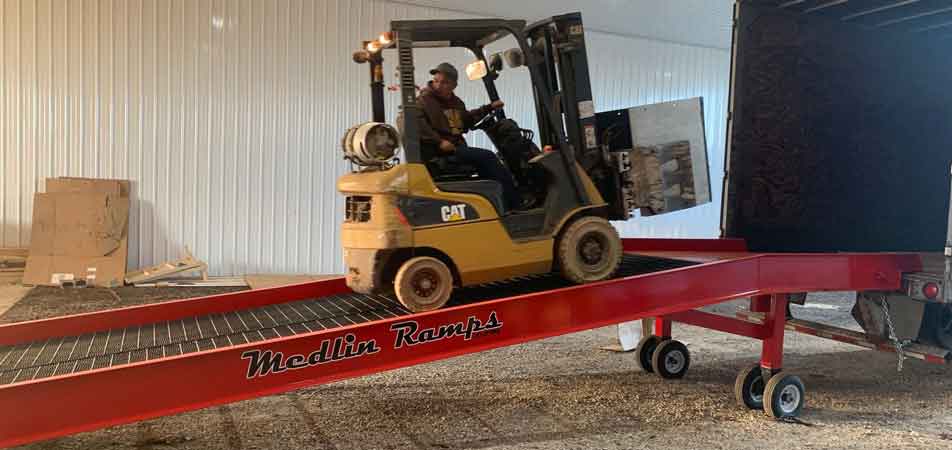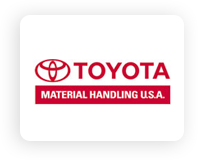Introduction to Forklift Ramps
Forklift ramps are a common sight in construction sites and industrial facilities, where they play a critical role in moving various items and materials between different levels. These ramps can be strategically placed both inside and outside of buildings to facilitate efficient operations.
Despite their effectiveness, improper use of forklift ramps can pose significant risks. It is crucial to select a ramp that matches the size and specifications of your forklift. Available in various slopes and sizes, choosing the appropriate ramp is essential for safe and efficient use.
Before using a forklift ramp, it is imperative to inspect it for any cracks or damages that could lead to structural failure. When operating a forklift on a ramp, always drive slowly and avoid sudden turns or stops to prevent the load from shifting and causing accidents. This comprehensive guide provides detailed information on the design and safety tips for using forklift ramps.
What is a Forklift Ramp?
A forklift ramp is a specialized tool that enables a forklift to traverse specific areas, often to reach greater heights. The dimensions and capacity of a forklift ramp depend on the particular project requirements. While dock boards or curb ramps may be as short as 3-4 feet, mobile yard ramps can extend up to 30-40 feet.
OSHA Forklift Ramp Design and Safety Requirements
The Occupational Safety and Health Administration (OSHA) was established by the U.S. Congress in 1970 to ensure safe and healthy working conditions by setting and enforcing standards. Due to the inherent risks of using forklift ramps, OSHA has outlined specific guidelines and safety requirements for their use. According to OSHA, any area where a forklift operates on an incline greater than 10 degrees is considered a slope, incline, or ramp. Key guidelines include:
- The load must be tilted backward on all grades if possible, and only raised as needed for safe driving.
- Ascend and descend all grades slowly.
- For grades above 10%, the load must face uphill regardless of the forklift’s direction.
To determine a ramp’s angle, divide the rise by the run and multiply by 100. For example, a ramp with a rise of 12 inches and a length of 120 inches has an angle of 10 degrees, subjecting it to OSHA guidelines.
Operating a Forklift on an Incline or Ramp
Even experienced forklift operators can find navigating inclines challenging. Safety training covers the risks associated with driving on slopes. Operators should consult the forklift’s manual to understand the maximum slope limit and the machine’s gradeability, which is the steepest grade a forklift can handle at full capacity. Typically, forklifts have a maximum gradeability of around 40%.
Adhering to OSHA guidelines, such as maintaining slow speeds on inclines, is essential for safety, even when the forklift is not carrying a load.
Impact of Ramps on Forklifts
OSHA’s safety guidelines are in place because climbing steep grades with a forklift can adversely affect the machine’s longevity, reliability, fuel consumption, component temperature, and battery cycle time. Descending ramps with heavy loads also requires adherence to safety guidelines to prevent accidents.
Forklift Gradeability
Every forklift model comes with a gradeability rating provided by the manufacturer, indicating the maximum grade the machine can climb and stop on with a load. While some forklifts have a 20% gradeability (approximately 12 degrees), rough-terrain forklifts can have ratings of 30-40%.
Conversions
To determine the degree or angle suitable for operating a forklift, you may need to convert percentage grades to degrees. For instance, a 40% gradeability corresponds to a 22-degree slope.
Forklift Ramp Safety: Smart Ramp Design
Ramps designed with OSHA requirements in mind can significantly reduce the risk of forklift-related injuries and accidents. Key safety features include:
- High-Traction Surfaces: Ensuring that ramps have open steel grading to minimize moisture buildup and enhance wheel traction.
- Low-Angle Slopes: Longer ramps with shallower grades reduce the risk of tipping and load loss.
- Tall Ramp Curbs: Steel curbs along the ramp edges provide additional protection against accidental falls.
- Extra Anchorage: Increasing the number of ground-level anchors reduces the likelihood of ramp shifting during use.
Forklift Ramp Safety FAQs
How Should a Forklift Ascend a Ramp?
Drive straight forward up the ramp, with forks pointed uphill if carrying a load, and downhill if not.
What is the Maximum Slope for a Forklift Ramp?
OSHA specifies that ramps should not exceed a slope of 20 degrees. Check the manufacturer’s guide for specific maximum slope information.
Can a Forklift Descend a Ramp?
Forklifts can travel down ramps. Without a load, drive in reverse with forks pointed downward.
Can You Turn a Forklift on a Slope?
Never turn a forklift on a slope; keep wheels straight to avoid accidents.
How Long Does It Take to Stop a Forklift on a Ramp?
Stopping distance on a flat surface is about 16 feet at seven miles per hour. Allow more space for stopping on inclines or declines.
Why Choose Medlin Ramps?
At Medlin Ramps, our material handling and storage specialists are equipped to answer all your forklift ramp questions. We offer advisory services to ensure your facility’s design meets OSHA compliance, helping you save on operational costs, reduce project timelines, maximize efficiency, and increase capacity. Contact us today to learn more about how forklift ramps can benefit your facility.













